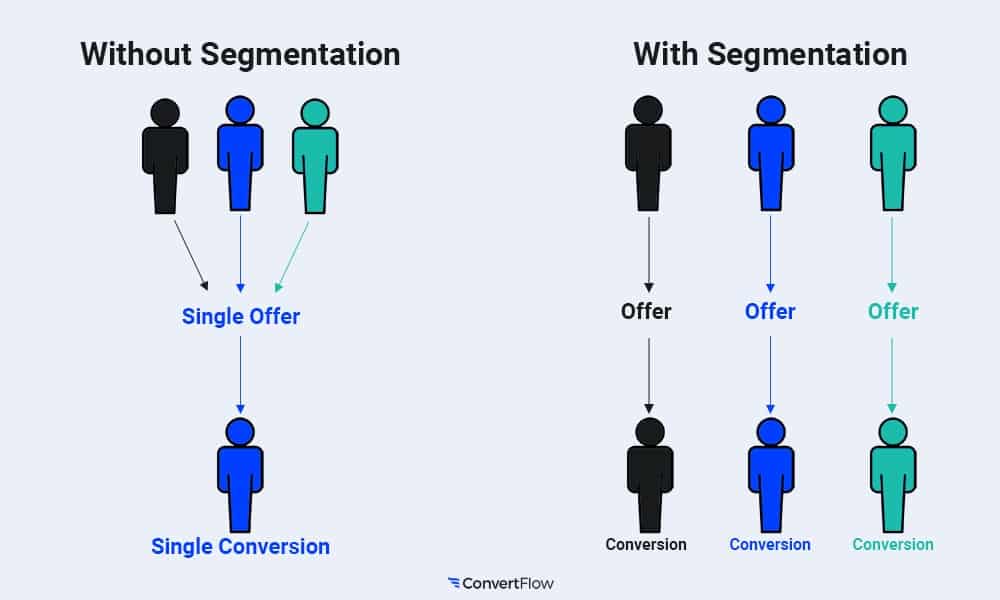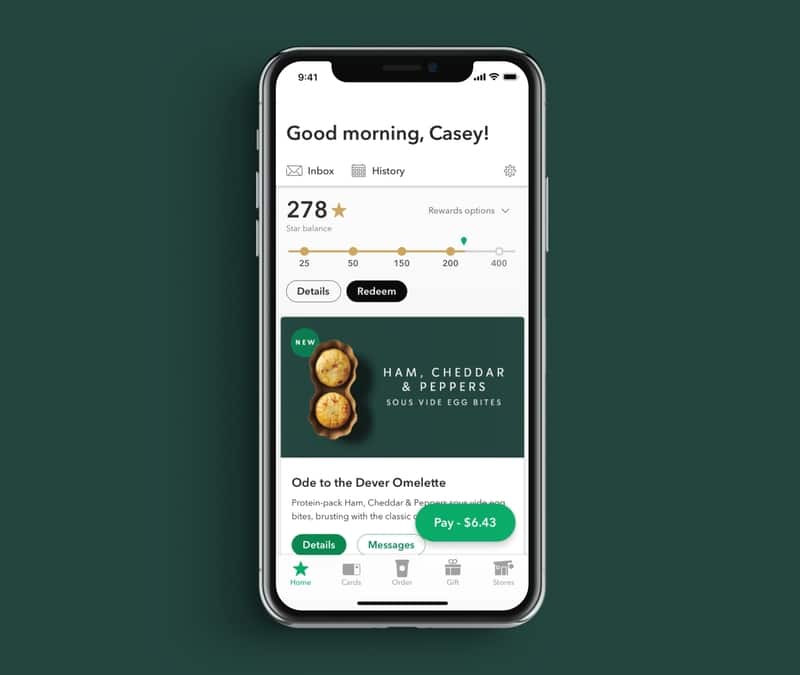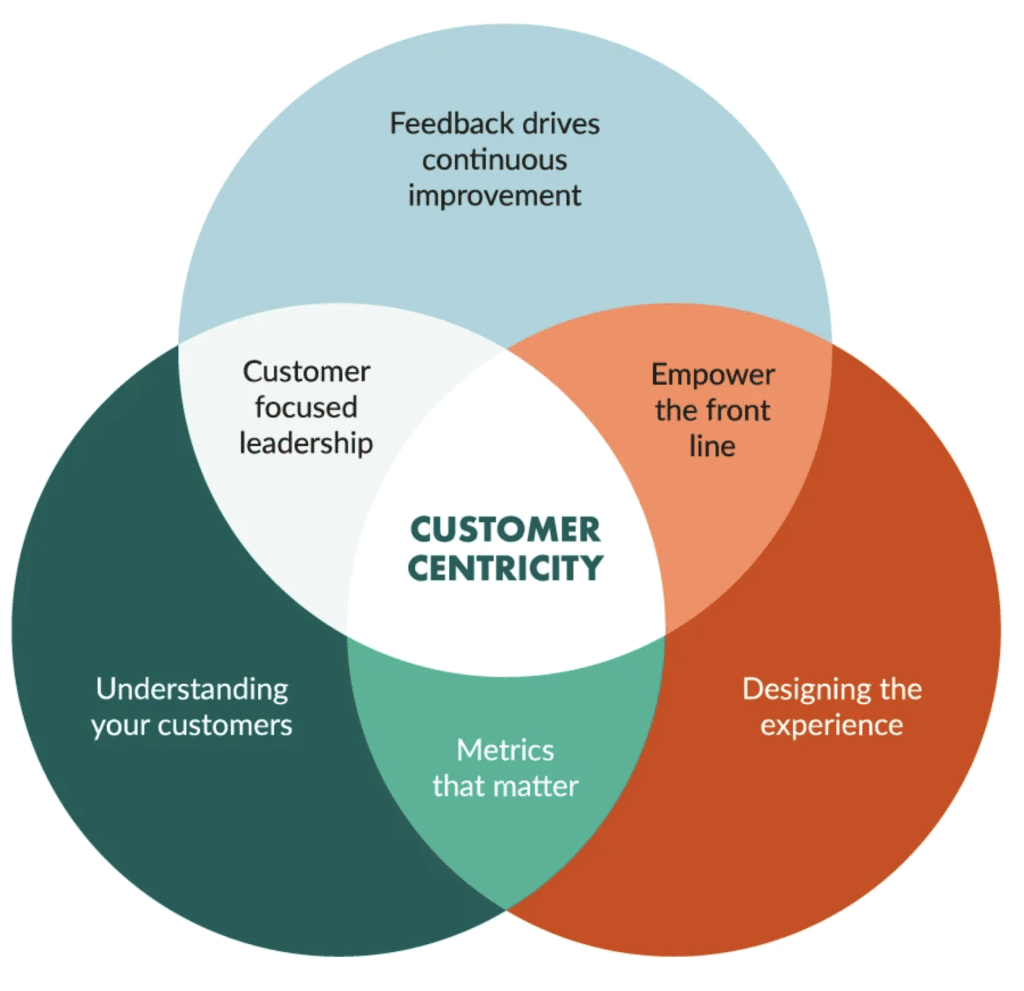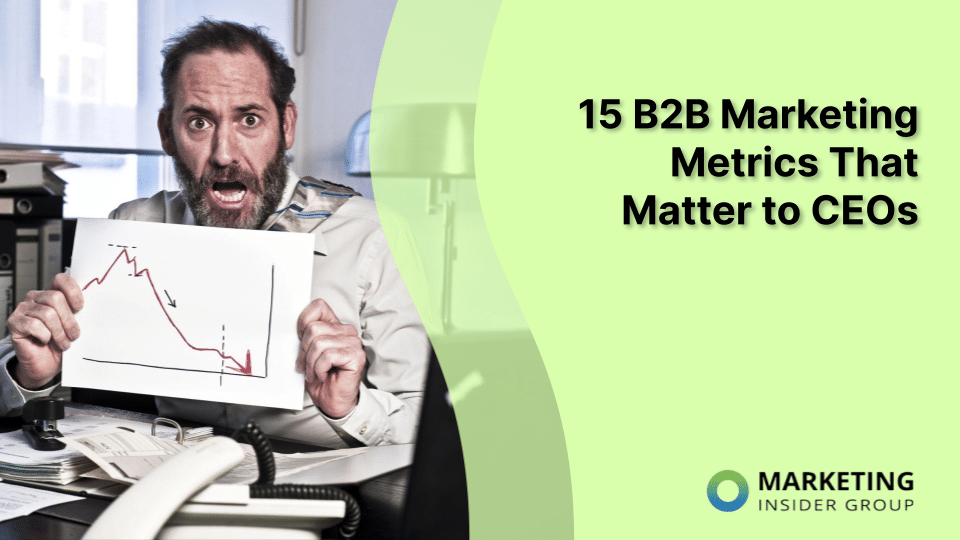
CEOs To Marketers: CMOs Need To Focus On Revenue Growth
Marketing bosses today have a big job. They need to help companies make more money, and they need to do it in ways that customers don’t find annoying. It’s a delicate balance, trying to catch their attention and win their trust, all while navigating the ever-changing digital landscape.
In the past, CMOs were the champions of brand awareness. Their main goal? Making sure everyone knew the company’s name and what it stood for. Billboards, TV commercials, and radio jingles were their playground.
But times have changed. Today’s CMOs have swapped out their megaphones for data dashboards. They’re diving deep into data, analyzing trends, and using all sorts of fancy tools to tailor their strategies.
In this post, we’ll explore the challenges and opportunities these changes present, and how the modern CMO is redefining the world of marketing.
Quick Takeaways
- Modern CMOs utilize data analytics to craft strategies that resonate with customer behaviors, preferences, and trends.
- With advanced digital tools, CMOs can track and optimize campaigns in real-time, leading to increased conversions.
- Today’s marketing emphasizes a seamless customer experience, prioritizing both attraction and retention in a competitive landscape.
- CMOs collaborate with departments like sales and IT to align marketing strategies with broader company goals, driving business growth.
The Modern CMO: Data-Driven Decision Making
The role of the CMO has seen a significant transformation. Gone are the days when marketing was just about catchy slogans and eye-catching billboards. Today’s CMOs are more like tech-savvy detectives, doing whatever it takes to uncover insights about their customers.
Here’s a closer look:
Data at the Forefront
Modern CMOs rely heavily on data analytics. They sift through mountains of data to understand customer behaviors, preferences, and trends.
This data-driven approach allows them to tailor marketing strategies that resonate with their target audience. The most effective content is the one that creates an emotional response and drives the human purchasing experience.
Embracing Technology
With so many digital tools available, CMOs are now equipped to track and measure the effectiveness of their campaigns in real-time. They use sophisticated tools to automate processes, segment their audience, and deliver personalized content, ultimately securing more conversions.

Image Source: ConvertFlow
Customer-Centric Approach
Modern marketing is all about the customer. CMOs are now more focused on creating a seamless customer experience across various touchpoints.
They understand that in today’s competitive landscape, it’s not just about attracting customers but also about retaining them. Marketing should be about “making the customer the hero.”
Continuous Learning
The digital landscape is ever-evolving. To stay relevant, CMOs need to be on their toes, always ready to adapt and learn. They need to stay updated with the latest trends, technologies, and shifts in consumer behavior.
Collaboration
Modern CMOs understand the importance of collaboration. They work closely with other departments, especially sales and IT, to ensure that marketing strategies are aligned with the company’s overall objectives.
Greater Marketing Responsibility
On one hand, this puts a lot of pressure on marketers to focus on data and using new technologies to ensure they are getting solid results from their marketing campaigns. So much so that ROI is ranked as the #1 issue that’s keeping CMOs up at night.

Image Source: Marketing Charts
It also forces CMOs to become deeply aware of the customer experience so our business is able to meet the customer at the omni-channel level. This is a difficult task, as the customer experience is evolving as fast as digital technologies and trends are changing.
The key to success is in being able to undergo a constant process of not just keeping up, but of staying ahead – even delivering what the customer wants before they even know they want it.
Even though this is true, only a small fraction of CMOs (8%) are successfully reviewing, auditing, and actively improving the way their brand interacts with their customer. We do the easy stuff: We buy ads. We splash our logo on a stadium, or a bus, or a golfers hat. We buy clicks on Facebook and Google. And then we high-five ourselves . . .
This gives leading marketers an advantage. Those of us who understand our buyers better than our best friend. Who initiate predictive engagements. And who are capable of utilizing data and new technology to improve our customers’ lives. (If this isn’t your mission, go home my friend! This Marketing thing ain’t for you.)
As an example, think of REI’s seamless integration of mobile and in-store shopping. Or the Starbucks reward card (LOVE), which can be reloaded by phone, website, in-store, or through the app, with all channels being updated in real-time.

Image Source: Jasmine Jones
This means that I can load funds onto their card while waiting in line to order my coffee and the cashier will see the update when the purchase is made – giving us Starbucks coffee drinkers the convenience that we have come to expect along with our burnt caffeine.
…And Greater Marketing Power
Viewed from another angle, this evolution of the CMO gives us more power. We are driving real businesses results through the wealth of tools at our fingertips.
From educating consumers through informative blog posts, and attracting leads with expert SEO tactics, to connecting with customers through social media, and solving their problems through mobile apps – digital marketing offers marketers more ways to reach and engage with customers, and drive actual sales.

Image Source: Infidigit
This is the central reason that CEOs expect more from today’s CMOs. Marketing leaders are capable of doing more as a result of the digital era.
Marketers can learn more about customers through data, make better decisions, and direct businesses along the most strategic paths in order to seek revenue growth.
This also makes it more important than ever before for marketing teams to spend more time working with executive management to help build business strategies. Right now, only 16 percent of CMOs are doing this effectively.
The most successful teams are those that not only fully embrace digital strategies, but who are able to connect marketing with the entire organization.
Marketers have access to more insights about customer behaviors and market trends than ever before. Ian Ewart, Head of Products, Services, and Marketing at Coutts notes that “if marketing is not driving the change agenda, then either the agenda is wrong or the marketing is not being effective.”
Budgets Have Evolved as Well
The other elephant in the room that has contributed towards the way leadership views the role of marketing comes down to practicality. When the global recession occurred, and then dragged on, budgets had to be reduced.
We have been forced to find more intelligent ways to engage customers and to boost sales. Gone are the days of spending mega bucks on ridiculous ad campaigns and reporting on impressions.
These phenomena coincided with consumers becoming savvier in how we choose to spend our time and incomes.
The solution has been for marketers to focus more on ROI, having to spend more energy examining the impact of each marketing dollar, and to utilize technology to create more effective, and often less expensive, programs.
The Secret To CMO Revenue Growth
We Marketers will always be a creative bunch. Even with the greater pressure to create revenue growth, that doesn’t mean that those creative strengths are any less important than they ever were.
Liz Miller from the CMO Council explains how stepping up to the reality faced by CMOs today is more about evolving than letting go of the true heart of marketing,
“…our storytelling is now being applied in very different ways, such as translating the voice of the customer so we can shape the brand to resemble the values of our most profitable customers,” she says.
Focusing on customers = more profitable marketing outcomes.

Image Source: SuperOfficeCRM
With this modern approach, CMOs are more than capable than ever of driving revenue growth.
The expectations are more dynamic today and yes, the pressure is on to produce results. For marketers who can apply their creativity, driving growth should be a piece of cake.
Easy, right?
Or, you can shop creative to an agency, buy some clicks, present all the impressions and reach you achieved. And watch the world pass you by.
Marketers need to speak truth to power. Put in the hard work of asking for the time it takes to build a customer-focused brand, and support it with business results the CEO wants to see…Or what?
Revenue Marketing: The Future of CMO Strategies
Revenue marketing is undeniably the driving force behind the modern CMO’s approach. As we’ve journeyed through the evolution of the CMO role, it’s clear that the blend of creativity and data-driven insights is pivotal in today’s marketing landscape.
The challenges are many, but the opportunities are vast. With a focus on genuine customer connections, understanding through data, and the agility to adapt, CMOs are doing a lot more than just promoting a brand. They’re leading the charge in revenue growth.
Ready to boost your revenue marketing game? Check out our SEO Blog Writing Service or schedule a quick consultation to learn more about how Marketing Insider Group can help you earn more traffic and leads for your business.







Michael:
This is certainly ideal and in a perfect world is great. The problem w/ CMOs being beholdened to revenue in the B2B space is that they generally don’t control inside or outside sales. A CMOs marketing program could be crushing it, but if conversion rates in inside or outside sales are less than 10% than the marketing program is being wasted.
CMOs in this position shouldn’t be beholdened to revenue. Sales should be. Most marketers I talk to have “helium head.” They think the solution to increasing revenue is up-funnel marketing activity. If the bottom of the funnel is a leaky bottleneck, no amount of up-funnel activity will fix the sales problem. Trying to do so is a waste of resources.
Neither current corporate structures nor legacy assumptions support CMOs being in charge of revenue growth.
The CMO can’t simply assume or be assigned responsibility – they won’t have authority.
The shift needs to be one explicitly promulgated and supported by the CEO and board. It is a major cultural shift as well as one which will be traumatic to the org chart, career aspirations, budgets, etc. Revenue growth is the CEO’s job as I wrote on the M&A forum. https://www.axial.net/forum/revenue-growth-ceo/
Yet it is critical important to companies’ viability.
Hi Ed, I don’t believe the survey that inspired this article is suggesting CEOs think CMOs should be responsible for revenue growth organization-wide.
But that MARKETING ACTIVITIES need to tie to revenue growth. I agree that revenue growth is the CEOs job. Marketing needs to have a conversation with these CEOs about business objectives (like revenue) and then turn those conversations into revenue-generating marketing plans. As the research suggested, only 16% of CMOs are having that conversation!
Instead, what most are doing is taking an order from the CEO to buy ads (because there is a nice fat budget behind that request). It’s no wonder why we are in this situation. But like I said, it’s a catch-22. CEOs are expecting revenue generation from marketing but asking for things from marketing that don’t produce revenue.
It’s a leadership gap we need to fill. It’s a business discussion CMOs need to have that sounds something like “you can’t have your cake and eat it too.” I always used to flip that conversation and tell sales people and executives who wanted revenue-producing marketing that “you can certainly ask for a cake, but then you can’t tell me how to bake it!”
I agree Chad, As a Marketing Leader in each company I worked for, my first job was to befriend the head of sales and ask them what they needed. My second job was to befriend the head of customer service and ask them what they needed. And the third job was to befriend the CFO to ask them what they needed. Then together we presented plans to executives on how to drive revenue and how marketing activities would support that business expectation.
I didn’t say this was easy. I’m only saying that CMOs who just take the easy route and buy ads are wasting their company’s money. CMOs who don’t have business conversations about business outcomes with the CEO (only 16% are) are going to be stuck in the uncomfortable position of explaining why marketing isn;t delivering business value to the majority of CEOs who are demanding revenue generation.
This survey is about the gap between what CEOs expect (revenue) and what CMOs are doing (ads). It’s not impossible to fix but it takes courageous leadership, a focus on modern marketing skills, some simple business acumen, and an ability to work across the organization (as you alluded to).
Great article Michael! Although I do agree that the marketing side should do more than create campaigns that only looks to target clicks, impressions, and reach but I don’t feel CMO should be responsible for increasing revenue. Marketing and sales should go hand in hand in finding and securing leads to increase sales. Many people now want leads than impressions, reach and clicks (which is great) but once the marketing side has done its job of bringing leads its now the sales side that should close. One can’t out work or out do the other side. I do believe the CMO has a greater responsibility to combine both sides to make sure potential clients can get the most out of their marketing campaigns.
Thanks Aaron, see my comment to Chad who also makes this point. I think I addressed your suggestion there. I also think there are some exceptions. For example, while SAP mostly sells enterprise software that requires sales people to nurture and close, they also sell cloud-based solutions delivered directly over the cloud. One-click to buy. “Low-touch / No-touch,” as they call it. In this case, it is 100% marketing’s job to deliver revenue.
Also, the point of this article is about the research defining the expectation from CEOs and the gap between what they want and the percentage of CMOs who are discussing those expectations with their boss. This has to change, whether that conversation leads to an actual objective for marketing to deliver revenue is another story. But 100% of CMOs should be talking to the CEO about the role of marketing today!
CMOs: I’m sure you already know it off the top of your head, but make sure your first step is to find out the companies Customer Retention or Churn percentage! In our 2016 Net Promoter Benchmark study, we found that 40% of marketing professionals did not know their Retention rate. The average for those that did know was approx 80% retention. If you can move this percentage a little that can be $millions and is a great success as a marketer. Make sure you own this number, and have the tools, like a professional NPS tool to help measure and move it.
Thanks so much Adam,
Can you provide a link to the study? Also, would be happy to post an article covering it if you want to write one up?
I’ve written a ton about how retention increases are by far the best way for marketing to improve sales. We spend so much time thinking about acquisition. And forget about the “Lost art” of keeping customers:
http://wordpress-153115-439849.cloudwaysapps.com/strategy/customer-retention-lost-art-science-marketing/